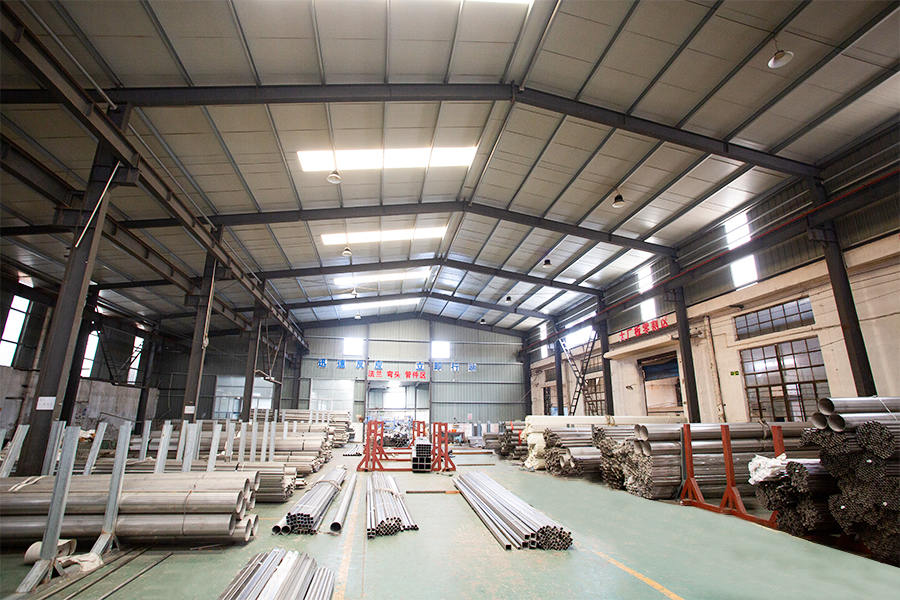Introduction to Stainless Steel Seamless Pipes
Stainless steel seamless pipes are widely recognized for their exceptional durability and resistance to corrosion, making them an essential component in many industries. Unlike welded pipes, seamless pipes are manufactured from a single piece of steel, which eliminates the risks of weak spots or weld defects. This makes them particularly well-suited for applications where high pressure and extreme temperatures are a concern. In this article, we will explore how stainless steel seamless pipes handle these demanding conditions and why they are favored for such purposes.
Pressure Resistance of Stainless Steel Seamless Pipes
One of the primary reasons stainless steel seamless pipes are preferred for high-pressure applications is their superior strength. The manufacturing process of seamless pipes, where a solid billet is heated and extruded into a pipe shape, allows them to maintain uniformity and integrity throughout their structure. This means they can withstand higher pressure than welded pipes, which are more susceptible to stress at the seam.
Key Factors Affecting Pressure Resistance
- Material composition: The type of stainless steel used (e.g., 304, 316) plays a significant role in determining the pressure tolerance of the pipe.
- Pipe diameter and wall thickness: Larger diameters and thicker walls provide greater resistance to internal pressure.
- Temperature: High temperatures can weaken metal, so the combination of pressure and temperature must be carefully considered in design.
- Manufacturing quality: The quality of the extrusion process ensures the pipe is free from defects and can withstand extreme pressure without failure.
High Temperature Resistance of Stainless Steel Seamless Pipes
In addition to handling high pressures, stainless steel seamless pipes are known for their ability to withstand extreme temperatures. Stainless steel is a highly heat-resistant material, capable of maintaining its structural integrity at temperatures up to 800°F (427°C) and even higher, depending on the grade. This makes them ideal for applications in industries such as oil and gas, petrochemical, and power generation, where both high pressure and high temperatures are common.

How Stainless Steel Handles High Temperatures
Stainless steel’s resistance to high temperatures comes from its chromium content, which helps the metal resist oxidation and maintain strength under heat. The higher the chromium content, the more resistant the material is to scaling and degradation caused by heat. Grades such as 316 stainless steel, for instance, contain molybdenum, which enhances their heat resistance even further.
Temperature and Pressure Combined
When high temperature and high pressure are combined, the performance of stainless steel seamless pipes can be affected. For example, the thermal expansion of the pipe can affect its ability to withstand pressure. However, the high tensile strength of stainless steel helps it maintain stability under these extreme conditions, making it a reliable choice for industrial systems that involve both pressure and heat, such as power plants or chemical reactors.
Applications of Stainless Steel Seamless Pipes in Extreme Conditions
Due to their exceptional pressure and temperature resistance, stainless steel seamless pipes are commonly used in a variety of demanding applications. Some of the most notable applications include:
Oil and Gas Industry
In the oil and gas industry, seamless pipes are used in both upstream and downstream operations, such as in drilling, transportation, and refining. These pipes are exposed to both high pressure and temperatures, making stainless steel seamless pipes an essential choice. The ability to handle corrosive environments is another important feature that makes stainless steel ideal for this industry.
Power Generation
In power plants, especially those using steam turbines, stainless steel seamless pipes are used to carry high-pressure steam or fluids at high temperatures. The pipes' ability to withstand extreme conditions without failure ensures the efficiency and safety of the plant operations.
Chemical Processing
The chemical industry often requires pipes that can handle both high pressure and corrosive chemicals at elevated temperatures. Stainless steel seamless pipes, particularly those made from grades like 316, offer the perfect combination of heat resistance, strength, and corrosion resistance.
Conclusion
Stainless steel seamless pipes are designed to withstand the toughest conditions, including extreme pressure and high temperatures. Their strength, durability, and resistance to corrosion make them the go-to material for a wide range of industries that require reliable piping solutions. Whether it’s oil and gas, power generation, or chemical processing, stainless steel seamless pipes ensure optimal performance even in the most demanding environments. Choosing the right grade and ensuring high-quality manufacturing is crucial to ensuring these pipes perform at their best in extreme conditions.


 English
English русский
русский عربى
عربى 中文简体
中文简体
